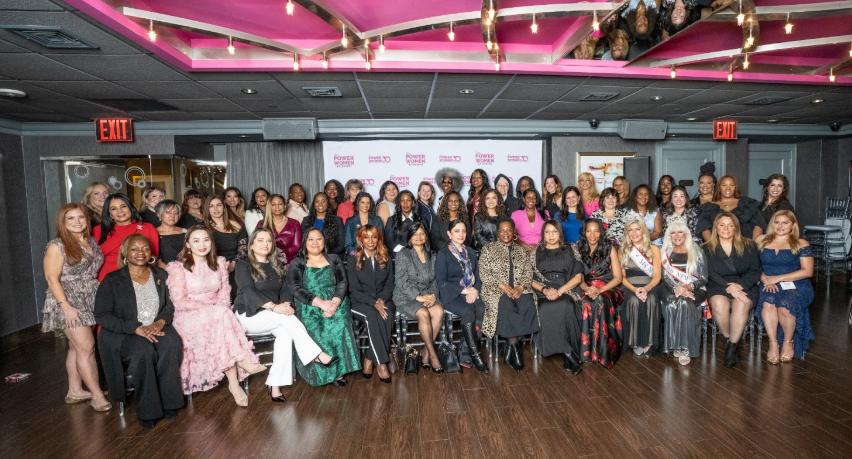As the Brooklyn-based Garifuna Indigenous People of St. Vincent and the Grenadines, Inc. (GIPSVG) hosted National Heroes Day Cultural Fest on March 9, at the Friends of Crown Heights Educational Center in Brooklyn, the group did not neglect in highlighting Joseph Chatoyer, the paramount chief of the Black Caribs (Garifuna).
GIPSVG notes in its souvenir program that Chatoyer was officially declared the first National Hero of St. Vincent and the Grenadines on March 14, 2002, in accordance with the National Heroes Act (2002). March 14 has been designated National Heroes Day in St. Vincent and the Grenadines as a public holiday.
“Chief Chatoyer was a freedom fighter, deliberator, leader and staunch opposer of colonialism, leading the military strength as head of the Garifuna Council and War Council,” GIPSVG says. “The indigenous Garifuna population on St. Vincent succeeded in resisting European attempts at colonization for two centuries.
“However, by 1770, Britain and France forced inroads on St. Vincent,” it adds.
GIPSVG says that, in 1772, the Garifuna rebelled, led by Chatoyer, leading to the First Carib War and resulting in the British being forced to sign a treaty.
“This was the first time Britain had been forced to sign an accord with any indigenous population in the Americas,” GIPSVG says. “It became apparent in 1795 that Britain had no intention of honoring the treaty, and this led to the Second Carib War.”
GIPSVG says Chatoyer divided the island with DuValle, another chieftain.
Working his way along the west coast, GIPSVG says Chatoyer met with his French supporters at Chateaubelair, “and together the forces worked their way to Dorsetshire Hill (overlooking Kingstown), from where they would launch their attack on the capital, Kingstown.”
On March 14, 1795, GIPSVG says a battalion of British soldiers led by General Ralph Abercromby marched on Dorsetshire Hill.
That evening, Chatoyer was killed by Major Alexander Leith, GIPSVG says.
“Though the rebellion continued, until June 1796, Chatoyer’s death led to the desertion of the French supporters and ultimately turned the tide of the war,” the Garifuna group says.
“A monument (Obelisk) stands on Dorsetshire Hill, where he (Chatoyer) was killed by the British in defending his honor, way of life and in opposition of colonialism,” it adds.
Last week, the Bronx-based Garifuna Coalition USA, Inc. launched Garifuna-American Heritage Month 2019 celebrations.
“Today, we observe the 22nd Anniversary of the Forcible Deportation of the Garifuna People from St. Vincent and the Grenadines to Central America in 1797,” said the group in a statement, stating that, on March 11, 1797, 2,248 Black Caribs / Garifunas were “loaded onto eight ships and set off across the Caribbean Sea.”
The Coalition said 2,206 survived the journey and landed in Roatan, Bay Islands, Honduras.
Each year, Garifuna Americans in New York observe Garifuna-American Heritage Month from March 11 to April 12.
“The day of March 11 is significant, because it is the anniversary of the forcible deportation of the Garifuna people by the British from St. Vincent and the Grenadines in 1797,” the Coalition said.
“Garifuna-American Heritage Month provides an opportunity to celebrate the Garifuna family reunification and recognize the significance of Garifuna’s contributions to the quality and character of life of New York City, through many events and activities throughout the month, for all people to gain a greater appreciation of Garifuna history and traditions, and of the role Garifuna-Americans have played, and will continue to play, in New York’s society,” the Coalition said.
It said the Garifuna are “a hybrid people resulting from a biological and cultural mixture between Caribs and Arawaks of the Caribbean and people of African origin.”
“This process of hybridization, which took place in the Caribbean island of St. Vincent and the Grenadines, gave rise to a new group called the Garifuna or the Garinagu,” the Coalition said.
“All of the communities in Belize, Guatemala, Honduras and Nicaragua descend from the just over 2,000 Garifuna people forcibly deported from St. Vincent in 1797,” it added. “They are, therefore, one people who share the same history and a common tradition in language, music and dance, among other things.”
The Coalition said New York City is currently home to the largest Garifuna population outside of Central America, with an estimated 200,000 living in the South Bronx, Brownsville and East New York in Brooklyn, and Harlem.



























